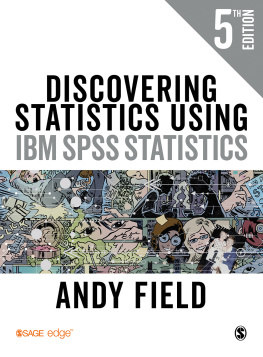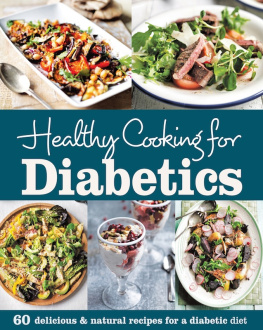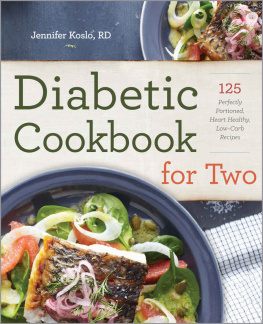Copyright 2021 Owen Field - All Rights Reserved.
In no way is it legal to reproduce, duplicate, or transmit any part of this document by either electronic means or in printed format. Recording of this publication is strictly prohibited, and any storage of this material is not allowed unless with written permission from the publisher. All rights reserved.
The information provided herein is stated to be truthful and consistent, in that any liability, regarding inattention or otherwise, by any usage or abuse of any policies, processes, or directions contained within is the solitary and complete responsibility of the recipient reader. Under no circumstances will any legal liability or blame be held against the publisher for any reparation, damages, or monetary loss due to the information herein, either directly or indirectly.
Respective authors own all copyrights not held by the publisher.
Legal Notice:
This book is copyright protected. This is only for personal use. You cannot amend, distribute, sell, use, quote or paraphrase any part of the content within this book without the consent of the author or copyright owner. Legal action will be pursued if this is breached.
Disclaimer Notice:
Please note the information contained within this document is for educational and entertainment purposes only. Every attempt has been made to provide accurate, up-to-date and reliable, complete information. No warranties of any kind are expressed or implied. Readers acknowledge that the author is not engaging in the rendering of legal, financial, medical or professional advice.
By reading this document, the reader agrees that under no circumstances are we responsible for any losses, direct or indirect, which are incurred as a result of the use of information contained within this document, including, but not limited to, errors, omissions, or inaccuracies.
CONTENTS
DIABETES DIET, EATING, & PHYSICAL ACTIVITY
Nutrition and physical activity are important parts of a healthy lifestyle when you have diabetes. Along with other benefits, following a healthy meal plan and being active can help you keep your blood glucose level, also called blood sugar, in your target range. To manage your blood glucose, you need to balance what you eat and drink with physical activity and diabetes medicine, if you take any. What you choose to eat, how much you eat, and when you eat are all important in keeping your blood glucose level in the range that your health care team recommends.
Becoming more active and making changes in what you eat and drink can seem challenging at first. You may find it easier to start with small changes and get help from your family, friends, and health care team.
Eating well and being physically active most days of the week can help you
keep your blood glucose level, blood pressure, and cholesterol in your target ranges
lose weight or stay at a healthy weight
prevent or delay diabetes problems
feel good and have more energy
What Foods Can I Eat If I Have Diabetes?
You may worry that having diabetes means going without foods you enjoy. The good news is that you can still eat your favorite foods, but you might need to eat smaller portions or enjoy them less often. Your health care team will help create a diabetes meal plan for you that meets your needs and likes.
The key to eating with diabetes is to eat a variety of healthy foods from all food groups, in the amounts your meal plan outlines.
The food groups are
vegetables
nonstarchy: includes broccoli, carrots, greens, peppers, and tomatoes
starchy: includes potatoes, corn, and green peas
fruits includes oranges, melon, berries, apples, bananas, and grapes
grains at least half of your grains for the day should be whole grains
includes wheat, rice, oats, cornmeal, barley, and quinoa
examples: bread, pasta, cereal, and tortillas
protein
lean meat
chicken or turkey without the skin
fish
eggs
nuts and peanuts
dried beans and certain peas, such as chickpeas and split peas
meat substitutes, such as tofu
dairy nonfat or low fat
milk or lactose-free milk if you have lactose intolerance
yogurt
cheese
Eat foods with heart-healthy fats, which mainly come from these foods:
oils that are liquid at room temperature, such as canola and olive oil
nuts and seeds
heart-healthy fish such as salmon, tuna, and mackerel
avocado
Use oils when cooking food instead of butter, cream, shortening, lard, or stick margarine.
What Foods And Drinks Should I Limit If I Have Diabetes?
Foods and drinks to limit include
fried foods and other foods high in saturated fat and trans fat
foods high in salt, also called sodium
sweets, such as baked goods, candy, and ice cream
beverages with added sugars, such as juice, regular soda, and regular sports or energy drinks
Drink water instead of sweetened beverages. Consider using a sugar substitute in your coffee or tea.
If you drink alcohol, drink moderatelyno more than one drink a day if youre a woman or two drinks a day if youre a man. If you use insulin or diabetes medicines that increase the amount of insulin your body makes, alcohol can make your blood glucose level drop too low. This is especially true if you havent eaten in a while. Its best to eat some food when you drink alcohol.
When Should I Eat If I Have Diabetes?
Some people with diabetes need to eat at about the same time each day. Others can be more flexible with the timing of their meals. Depending on your diabetes medicines or type of insulin, you may need to eat the same amount of carbohydrates at the same time each day. If you take mealtime insulin, your eating schedule can be more flexible.
If you use certain diabetes medicines or insulin and you skip or delay a meal, your blood glucose level can drop too low. Ask your health care team when you should eat and whether you should eat before and after physical activity.
Will Supplements And Vitamins Help My Diabetes?
No clear proof exists that taking dietary supplements such as vitamins, minerals, herbs, or spices can help manage diabetes. You may need supplements if you cannot get enough vitamins and minerals from foods. Talk with your health care provider before you take any dietary supplement since some can cause side effects or affect how your medicines work.
Why Should I Be Physically Active If I Have Diabetes?
Physical activity is an important part of managing your blood glucose level and staying healthy. Being active has many health benefits.
Physical activity
lowers blood glucose levels
lowers blood pressure
improves blood flow
burns extra calories so you can keep your weight down if needed
improves your mood
can prevent falls and improve memory in older adults
may help you sleep better
If you are overweight, combining physical activity with a reduced-calorie eating plan can lead to even more benefits. In the Look AHEAD: Action for Health in Diabetes study,1 overweight adults with type 2 diabetes who ate less and moved more had greater long-term health benefits compared to those who didnt make these changes. These benefits included improved cholesterol levels, less sleep apnea, and being able to move around more easily.
Even small amounts of physical activity can help. Experts suggest that you aim for at least 30 minutes of moderate or vigorous physical activity 5 days of the week. Moderate activity feels somewhat hard, and vigorous activity is intense and feels hard. If you want to lose weight or maintain weight loss, you may need to do 60 minutes or more of physical activity 5 days of the week.

















